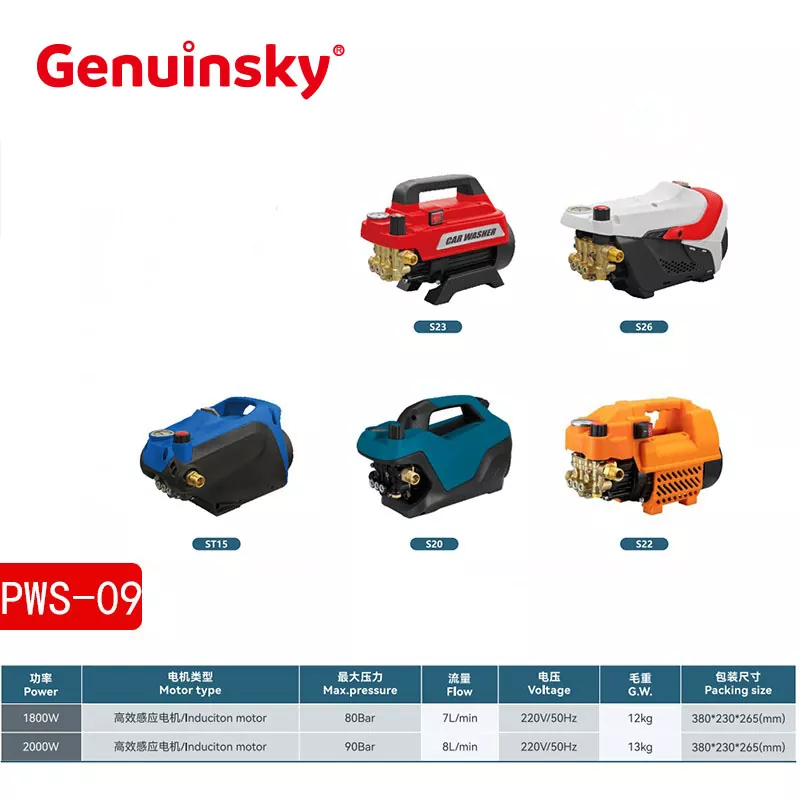How to choose nozzle for high pressure water gun write an essay
2025-06-20
Choosing the appropriate nozzle for a high-pressure water gun is essential for optimizing cleaning efficiency, preserving the condition of the surfaces being cleaned, and ensuring the longevity of the equipment. High-pressure washers are versatile tools used in various applications, from residential use for cleaning cars and patios to industrial use for heavy-duty tasks like stripping paint or degreasing machinery. However, the nozzle you select can significantly influence the outcome of the cleaning process. This essay delves into the factors to consider when choosing the right nozzle for a high-pressure water gun, with a focus on application, spray angle, pressure rating, and material.
1. Understand the Application
The first step in choosing the right nozzle for your high-pressure water gun is understanding the specific cleaning task at hand. Different applications require different spray patterns, flow rates, and pressure settings. For example:
Light Cleaning Tasks: If you're using the water gun for light tasks such as cleaning cars, windows, or furniture, you'll need a nozzle that provides a gentle spray to avoid damaging the surface. A wider spray angle such as 40° or 25° (commonly denoted as white or green nozzles) is ideal for these jobs. These nozzles disperse water over a larger area, reducing the intensity and pressure of the stream.
Heavy-Duty Cleaning Tasks: For tougher jobs such as cleaning driveways, patios, or removing stubborn dirt from concrete, you’ll need a narrower spray pattern (15° or 0° nozzles) that delivers concentrated pressure. A narrow stream directs the full force of the water onto the surface, making it easier to remove stubborn stains, grime, and even grease or paint. However, caution is needed, as the concentrated force can damage delicate surfaces.
Medium-Duty Cleaning Tasks: Tasks like cleaning decks, fences, or outdoor furniture require an intermediate spray angle of around 25°. This provides a balance between pressure and coverage, making it effective for general cleaning without causing harm to the surface.
2. Consider the Spray Angle and Pressure
Nozzles come in various spray angles, each offering different coverage and pressure levels. These angles are usually color-coded to simplify identification:
0° (Red Nozzle): The most concentrated and powerful spray. This is ideal for heavy-duty tasks, such as removing deeply embedded stains or stripping paint. However, it should be used with caution because the intense pressure can damage softer surfaces.
15° (Yellow Nozzle): Suitable for cleaning stubborn dirt, grease, and grime on surfaces like concrete or stone. It offers a narrower spray that focuses the power, but not as intensely as the 0° nozzle.
25° (Green Nozzle): This nozzle is versatile for general cleaning tasks. It offers a wider spray angle, making it appropriate for cleaning cars, decks, and other surfaces that need a gentler touch.
40° (White Nozzle): Ideal for light cleaning tasks, such as washing windows, cars, or outdoor furniture. It creates a wider spray that distributes water more evenly and gently.
65° (Black Nozzle): This nozzle is typically used for applying detergent or soap. The low-pressure setting allows the detergent to be applied evenly without high force, which would be unnecessary for this task.
The pressure rating of the nozzle must match the pressure output (measured in PSI, or pounds per square inch) of your high-pressure water gun. Using a nozzle with a lower PSI rating than the pressure your water gun delivers could cause the nozzle to wear out prematurely. Conversely, using a nozzle with a higher PSI rating than your water gun can handle could damage the nozzle or cause inefficient performance. It is crucial to ensure that the nozzle’s PSI rating aligns with your water gun's capabilities.

3. Material of the Nozzle
The material of the nozzle plays a crucial role in determining its durability and suitability for different environments. Nozzles are typically made from three common materials: plastic, brass, and stainless steel.
Plastic Nozzles: These are the most common and cost-effective option, often included with consumer-grade pressure washers. They are lightweight and sufficient for occasional use, but may wear out faster with frequent use or under high-pressure conditions.
Brass Nozzles: Brass is a more durable material than plastic and is resistant to corrosion. It is ideal for users who need a nozzle that can handle moderate to heavy use. Brass nozzles are often used in professional-grade pressure washers because they offer a longer lifespan and greater resilience.
Stainless Steel Nozzles: These nozzles are the most durable and are designed for high-end, commercial-grade pressure washers. They are highly resistant to wear, corrosion, and damage from high-pressure water flows. Stainless steel nozzles are well-suited for professional applications where the nozzle will be used continuously or in harsh environments.
4. Flow Rate and GPM (Gallons per Minute)
In addition to PSI, another important factor is the flow rate, which is measured in GPM (gallons per minute). The flow rate refers to how much water the pressure washer can deliver per minute. It’s essential to match the nozzle with the GPM rating of your pressure washer. A nozzle that cannot handle the flow rate might reduce cleaning efficiency or even cause clogging, while a nozzle with too large a flow rate could lead to ineffective cleaning or wasted water. Be sure to select a nozzle that is compatible with both the PSI and GPM specifications of your machine.
5. Adjustable and Rotating Nozzles
For added versatility, some high-pressure water guns come with adjustable nozzles or rotating turbo nozzles. Adjustable nozzles allow users to change the spray angle without switching out nozzles, making them an excellent choice for cleaning tasks that require frequent adjustments. Rotating nozzles provide a rotating, high-pressure jet that covers a wider area more quickly and is particularly useful for removing tough dirt and grime from large surfaces.
Conclusion
Choosing the right nozzle for a high-pressure water gun requires careful consideration of several factors, including the intended application, spray angle, pressure rating, material, and flow rate. By understanding the specific needs of the cleaning task and matching them with the appropriate nozzle, users can ensure efficient and effective cleaning while maintaining the longevity of both their surfaces and their equipment. Whether for light residential tasks or heavy-duty industrial cleaning, selecting the right nozzle is key to maximizing the performance and utility of a high-pressure water gun.
As a professional manufacturer and supplier, we provide high-quality products. If you are interested in our products or have any questions, please feel free to contact us.


